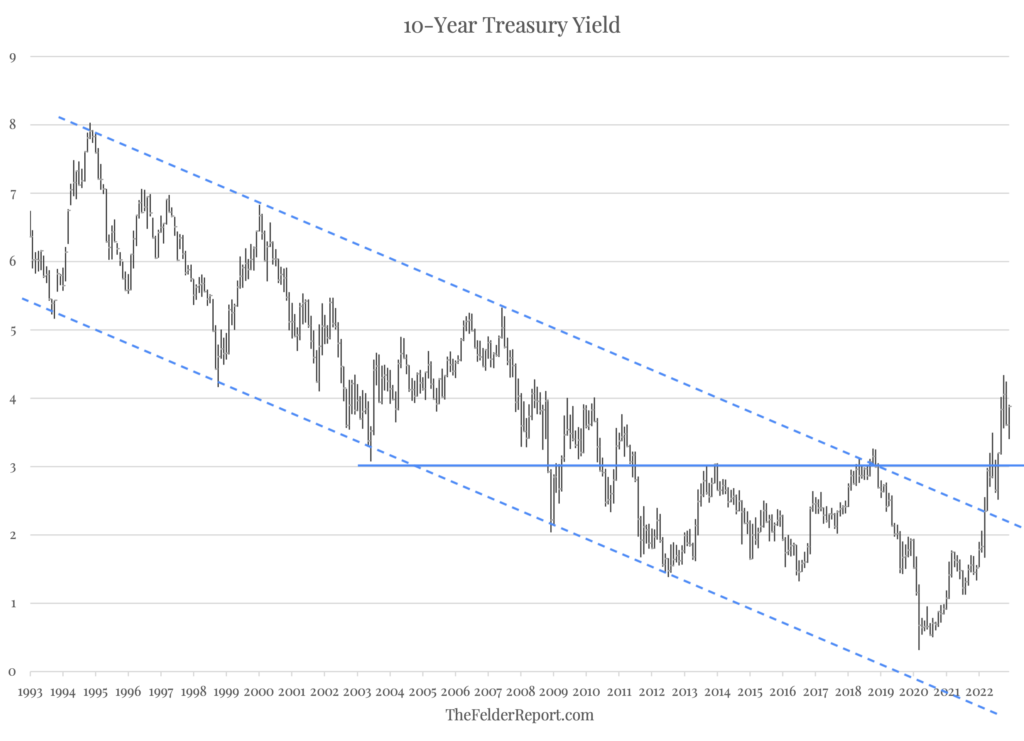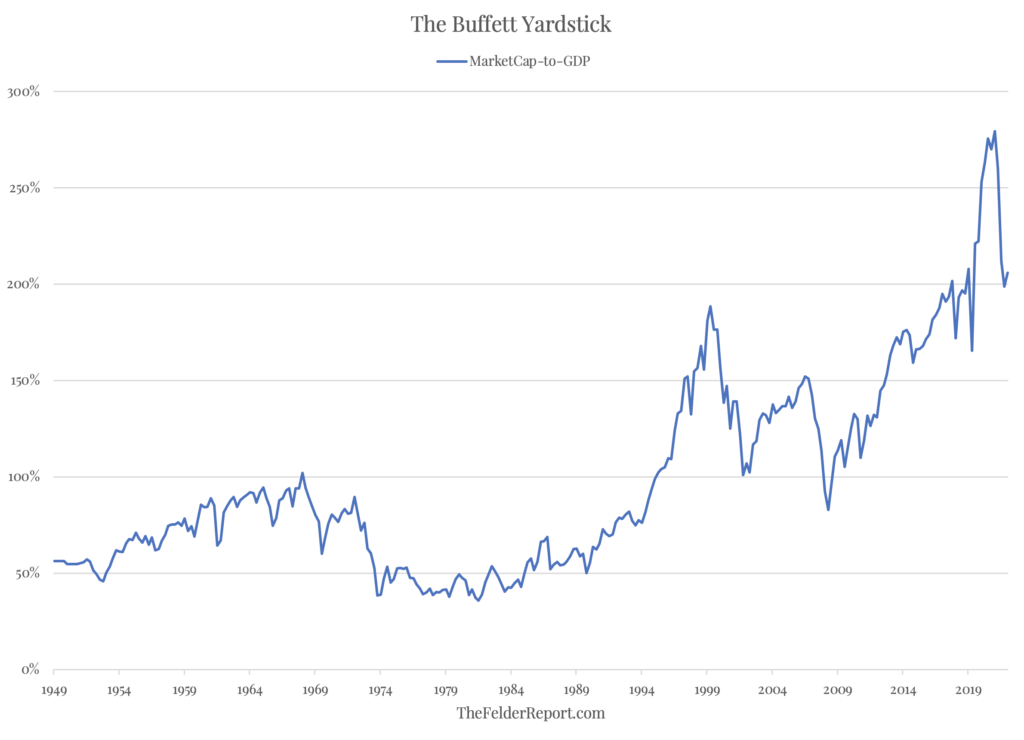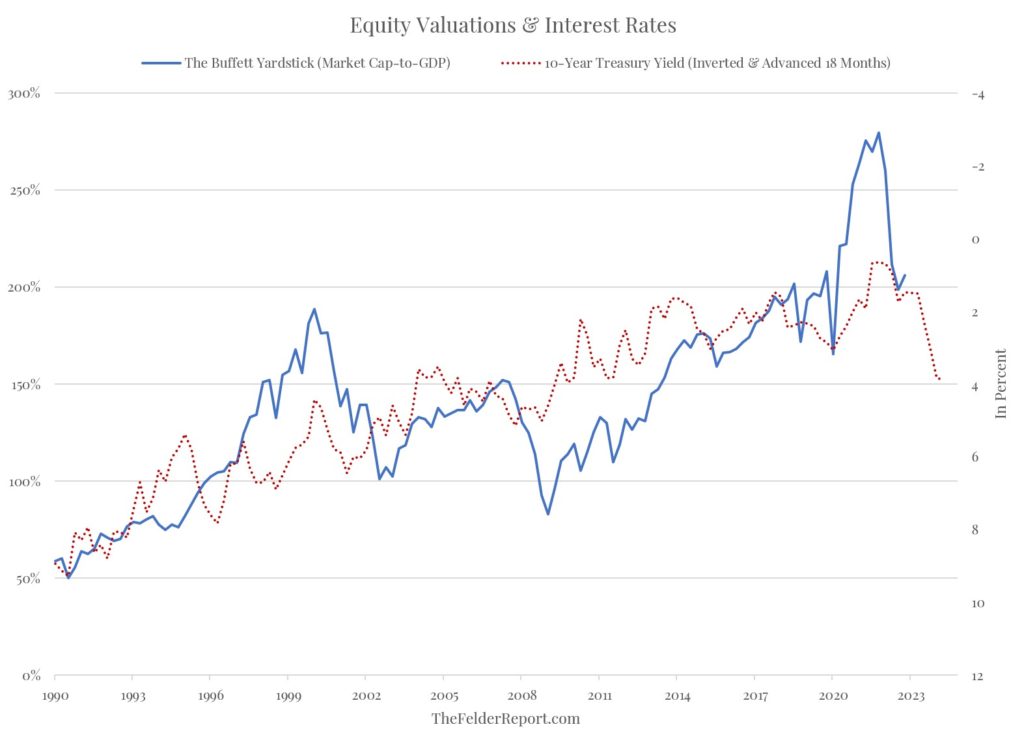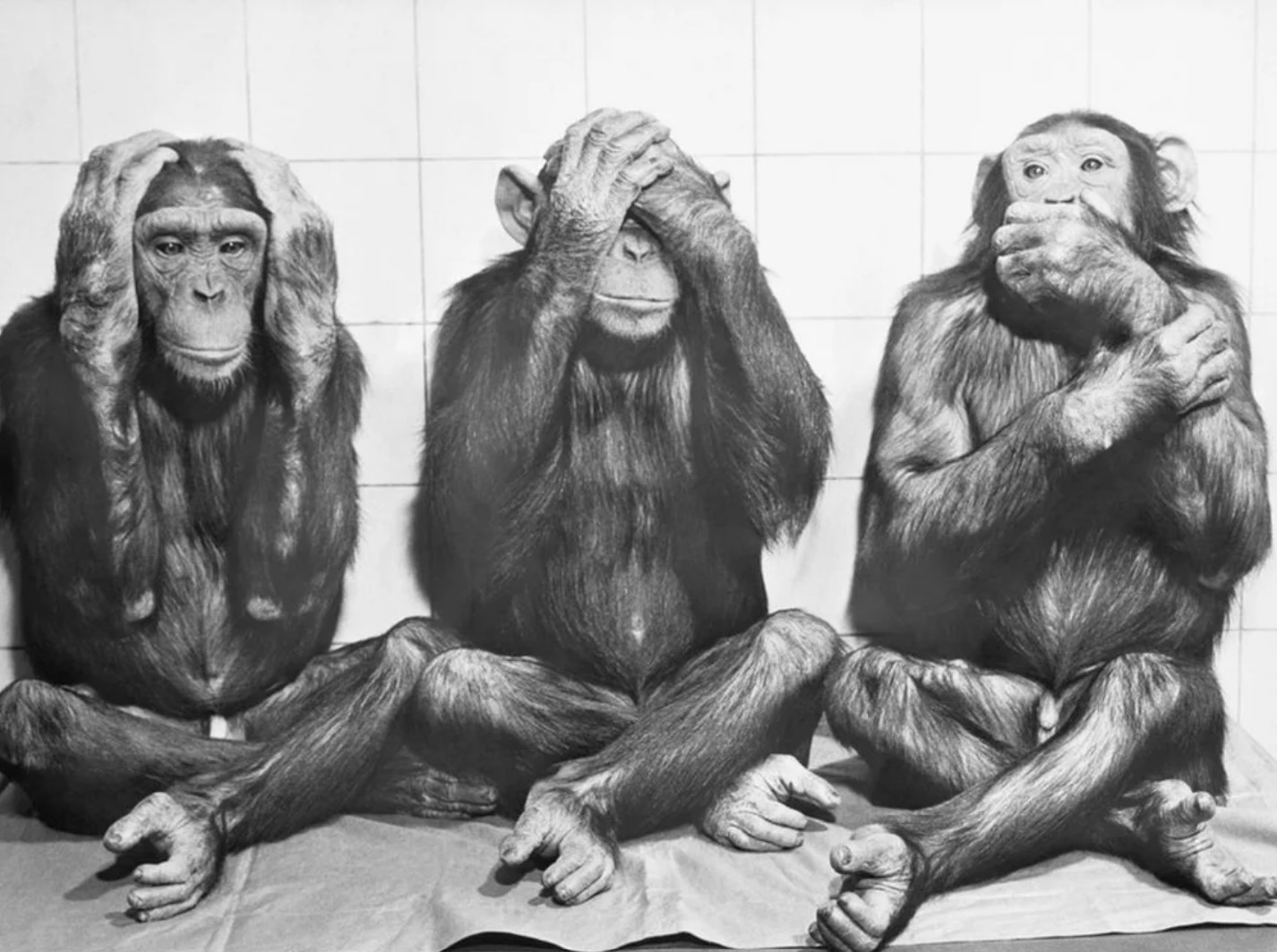They say there are five stages of grief; the same might be said about bear markets as investors typically go through a similar process beginning with denial. In this regard, the biggest development seen in the markets during 2022 was the breakout higher in interest rates driven by the return of inflation. The 10-year treasury yield broke out of its multi-decade downtrend channel and above the key 3% level which has marked overhead resistance since the Great Financial Crisis ended over a decade ago. It’s hard to overstate the significance of this as it marks a dramatic change in the environment investors had become inured to in recent years.
 Last year’s bear market for stocks was largely driven by this reversal in interest rates along with that in both fiscal and monetary accommodation. This combination significantly dampened euphoric risk appetites which had driven the broad stock market to the most extreme valuation levels in history. It’s important to note, however, that even after last year’s decline in stock prices valuations remain more extreme than at any point in time outside of the pandemic-induced blowoff top.
Last year’s bear market for stocks was largely driven by this reversal in interest rates along with that in both fiscal and monetary accommodation. This combination significantly dampened euphoric risk appetites which had driven the broad stock market to the most extreme valuation levels in history. It’s important to note, however, that even after last year’s decline in stock prices valuations remain more extreme than at any point in time outside of the pandemic-induced blowoff top.
 Moreover, there appears to be a lagged relationship between equity valuations and interest rates, with the former following the lead of the latter roughly 18 months later (as it takes time for the effects to be felt in terms of risk appetites, profit margins, etc.). When we overlay interest rates on the indicator above it immediately becomes clear that stock prices have not yet discounted the new, higher level of interest rates as indicated by the 10-year treasury yield.
Moreover, there appears to be a lagged relationship between equity valuations and interest rates, with the former following the lead of the latter roughly 18 months later (as it takes time for the effects to be felt in terms of risk appetites, profit margins, etc.). When we overlay interest rates on the indicator above it immediately becomes clear that stock prices have not yet discounted the new, higher level of interest rates as indicated by the 10-year treasury yield.
 In other words, the stock market seems to be anticipating a return to ultra-low interest rates in the near future. Of course, this is not the whole story; there are a myriad of other factors at work. However, the chart above is the best visual representation I’ve found to support the idea that most investors believe, rather than marking the start of a new regime, last year’s shifts in inflation and interest rates were an aberration and markets and the economy will soon return to the pre-pandemic paradigm. Of course, if they’re wrong and just in denial about a larger regime change underway it means the bear still has a good deal of work left to do.
In other words, the stock market seems to be anticipating a return to ultra-low interest rates in the near future. Of course, this is not the whole story; there are a myriad of other factors at work. However, the chart above is the best visual representation I’ve found to support the idea that most investors believe, rather than marking the start of a new regime, last year’s shifts in inflation and interest rates were an aberration and markets and the economy will soon return to the pre-pandemic paradigm. Of course, if they’re wrong and just in denial about a larger regime change underway it means the bear still has a good deal of work left to do.

